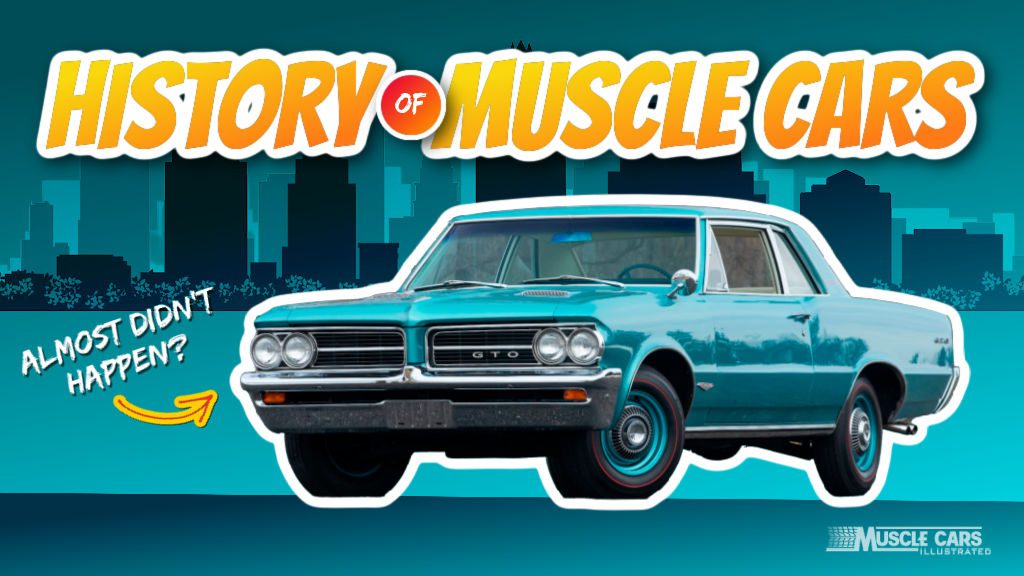
History of muscle cars—just the phrase conjures up the roar of a powerful V8 engine, the aroma of burning rubber, and the exhilaration of speed.
Welcome to the world of muscle cars, a symbol of American automotive power and a tribute to the spirit of freedom and rebellion.
In today’s article, I’ll take you on a fast-paced journey through time, tracing the birth and evolution of American supercars known as “muscle cars.”
Our exploration begins by uncovering the influential late 1940s and 1950s, which paved the way for the golden era of muscle cars.
Next, we’ll revisit the iconic 1960s and 70s, where these vehicles left an unforgettable mark on the auto industry, music, movies, and pop culture.
Lastly, we’ll delve into the factors that led to their decline by the mid-1970s, unraveling the complexities behind this significant shift.
Let’s take a closer look at the history of muscle cars, shall we?
Table of Contents
A Journey Through Muscle Car History
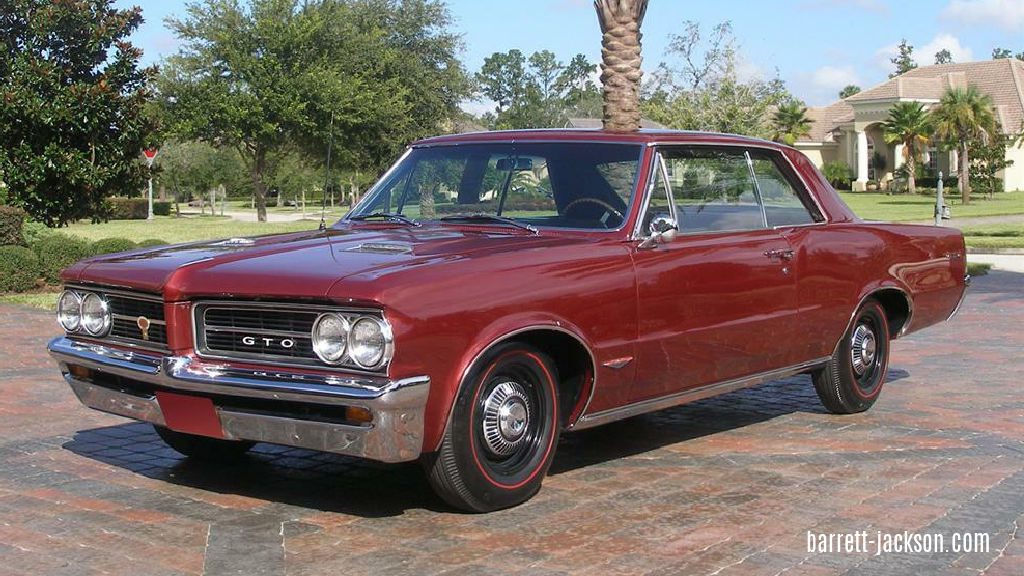
Taking a nostalgic trip down memory lane, exploring the rich heritage of muscle cars is like embarking on an exhilarating journey through automotive history.
These iconic machines have left an indelible mark on the world of automobiles, representing a time when power, speed, and style converged to create automotive legends.
From the 1960s to the late 1970s, muscle cars dominated the roads, embodying the spirit of freedom, rebellion, and pure driving pleasure.
They boasted high-performance V8 engines, churning out impressive horsepower that pushed the boundaries of automotive engineering.
With names like Plymouth Roadrunner, Chevrolet Chevelle SS, and Pontiac GTO, these popular models boomed with authority, captivating the hearts of enthusiasts across generations.
From drag strips to NASCAR tracks, muscle cars showcased their racing prowess, etching their names in the annals of motorsport history.
Each movie featuring muscle cars, like “Vanishing Point,” “Bullitt,” and “Two Lane Blacktop,” brought these mechanical marvels to life, immortalizing them on the silver screen.
Our journey through muscle car history explores a bygone era, where the rumble of engines and the allure of the open road still resonate, igniting the passion of car enthusiasts worldwide.
The Birth of Muscle Cars
The birth of muscle cars can be traced back to the availability of powerful V8 engines in a smaller and lighter body style. The 1949 Oldsmobile Rocket 88 pioneered in this regard, marking the first time such a potent combination was available.
This innovation was driven by a growing desire for speed and performance among young people, a rapidly expanding demographic with money to spend.
Automakers seized this opportunity, marketing their cars as high-performance and sporty, appealing to the thrill of speed and the allure of power. This led to intense competition among automakers, each vying to produce the fastest and most powerful cars.
The 1960s, in particular, saw the rise of the Baby Boomer generation, a demographic group that was reaching driving age and had disposable income.
Car manufacturers saw this as an opportunity to create a new type of car that would appeal to this younger market. Thus, muscle cars were born with their powerful engines and aggressive looks.
The popular culture of the 1960s also played a significant role in the birth of muscle cars.
Movies, music, and television often glorified speed and power, creating a demand for cars that could deliver these qualities.
The muscle car fits perfectly into this cultural narrative, symbolizing freedom, rebellion, and raw power.

Get The Top 50 Fastest Muscle Cars chart. Includes year, model, engine, 1/4 mile times, and more—absolutely free!
Where Muscle Cars Got Their Name
According to the Merriam-Webster Dictionary, the term “muscle car” has its roots in the United States and was first used in 1966.
However, the term “muscle car” took over a decade to gain widespread recognition. During that time, automotive magazines referred to these high-performance vehicles as “supercars.”
It’s worth noting that the term “supercars” is still used today, but it now typically describes foreign performance vehicles rather than the American muscle cars of the era.
Initially, this term was applied to mid-1960s and early 1970s special editions of mass-production cars designed specifically for drag racing.
As the popularity of these high-performance vehicles grew, the term “muscle car” began to permeate the general vocabulary. It was popularized through car magazines and automobile marketing.
It soon became a generic term for any American-made performance-oriented street car—even when technically a sports car, four-door, or pony car.
Exploring the Definition of Muscle Cars
What is a muscle car? A muscle car has American roots, purpose-built for straight-line performance, and targeted at young buyers.
These cars were built on an intermediate body style in the mid to late 60s and early 70s, featuring two doors, front and rear seats, and a high-performance V8 engine.
They had an automatic or manual transmission, rear-wheel drive, a 4v carburetor or higher, and dual exhaust. The sticker price during their heyday hovered around $3,000-$4,000 (USD).
Here are the fourteen characteristics that define this class of vehicles.
| Characteristic | Present |
|---|---|
| Two Doors | ✅ |
| Intermediate Body Style | ✅ |
| Built for Straight-Line Performance | ✅ |
| High-Performance V-8 | ✅ |
| 4v, 6v, or 8v Carburetor | ✅ |
| Dual Exhaust | ✅ |
| Manual or Automatic Transmission | ✅ |
| Rear Wheel Drive | ✅ |
| Originated in the USA | ✅ |
| Front and Rear Seats | ✅ |
| Affordable Cost ($3,000-$4,000) | ✅ |
| Muscle Car Option Package or Model | ✅ |
| Aimed at Young Buyers | ✅ |
| Limited Slip / Positraction | ✅ |
Difference Between Muscle Cars and Pony Cars
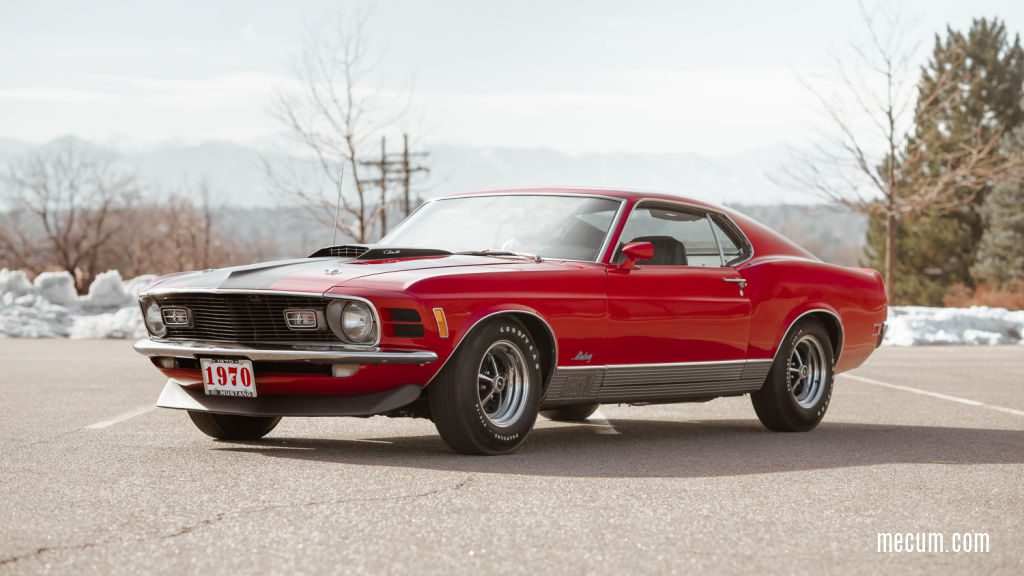
What’s the difference between muscle cars vs pony cars? While often confused, pony and muscle cars are distinct categories of American automobiles.
Pony cars, such as the 1969 Chevy Camaro Z/28 or the 1969 Ford Mustang Mach 1, are characterized by their affordable price point, compact size, and highly-stylized design, projecting a sporty and performance-focused image.
They were available with small and big block V8 engines, with manual and automatic transmission options. The main difference from a muscle car is that a pony car is built for better handling.
On the other hand, muscle cars, like the 1969 Chevy Chevelle SS or the 1970 Ford Torino Cobra, are defined as American vehicles with a high-performance V8 engine, two-door, mid-sized body, and rear-wheel drive.
These cars are built to provide speed and power, often featuring aggressive styling and projecting a macho image. They were marketed to young buyers with a price of around $3,000.
While both categories focus on performance and affordability, pony cars are more compact and designed for handling. In contrast, muscle cars are larger, heavier, and built for straight-line speed.
| Attribute | Pony Car | Muscle Car |
|---|---|---|
| Size | Compact | Mid-sized |
| Performance | Built for handling and straight-line performance | Built for straight-line performance |
| Body Style | Smaller, more compact platforms | Intermediate platforms |
| Engine | Small and big block V8 engines | Small and big block V8 engines |
| Transmission | Manual and automatic options | Manual and automatic options |
| Drive | Rear wheel drive | Rear wheel drive |
| Seating | Up to 4 comfortably | Up to 5-6 comfortably |
| Image | Sporty | Aggressive |
| Target Market | Aimed at young buyers | Aimed at young buyers |
| Origin | Originated in the USA | Originated in the USA |
| Weight | Lighter | Heavier |
| Length | Shorter | Longer |
| Wheelbase | Narrower | Wider |
Muscle cars in the Late 40s and 50s
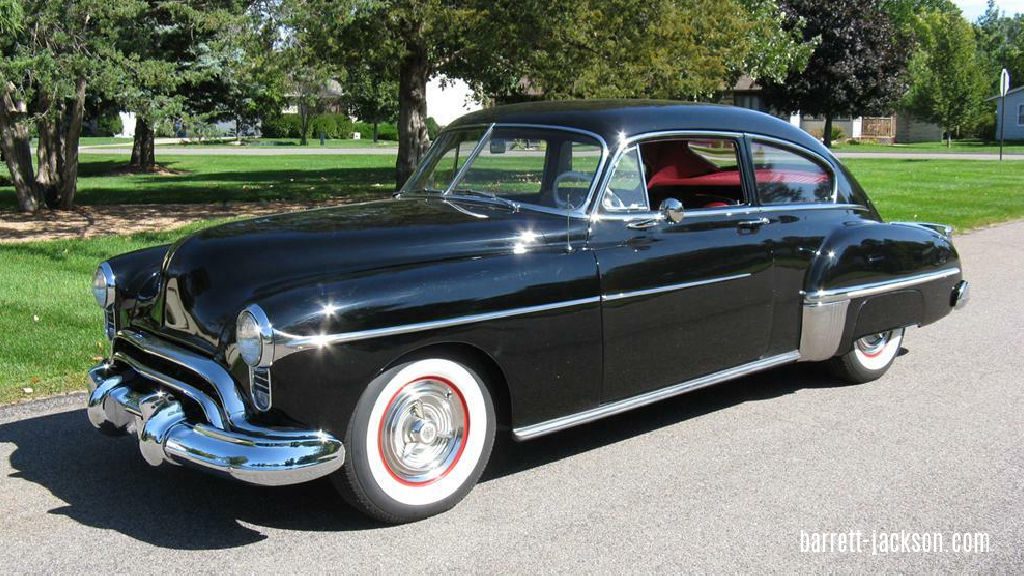
The origins of muscle cars can be traced back to the late 1940s, a period marked by post-war prosperity and a growing fascination with speed and power.
During this time, car manufacturers began experimenting with high-performance vehicles, creating early prototypes to lay the groundwork for the muscle cars we know today.
The influence of drag racing was significant during this period. The thrill of speed and the roar of powerful engines captivated car enthusiasts, creating a demand for vehicles that could deliver high performance on both the street and the racetrack.
| Attribute | 1950s Muscle Cars |
|---|---|
| Performance | High-performance V8 engines |
| Horsepower | Modest horsepower output—up to 300 hp |
| Speed | Powerful horsepower output—up to 300 hp |
| Design | Sleek and aerodynamic styling |
| Size | Large and full-size bodies |
| Weight | Relatively heavy weight |
| Transmission | Manual transmissions were predominant |
| Suspension | Firm and sport-tuned suspension |
| Braking | Front drum brakes were common |
| Technology | Limited technological features |
| Racing Heritage | Some participation in drag racing and NASCAR |
| Popular Models | Chevrolet Bel Air, Ford Thunderbird, Chrysler 300 |
| Iconic Engines | Ford Y-block V8, Chevrolet Small-Block V8, Chrysler FirePower V8 |
Several models in the 1940s and 1950s stand out as precursors to the muscle car revolution from Oldsmobile, Chevrolet, Chrysler, American Motors, and Packard.
1. 1949 Oldsomobile Rocket 88
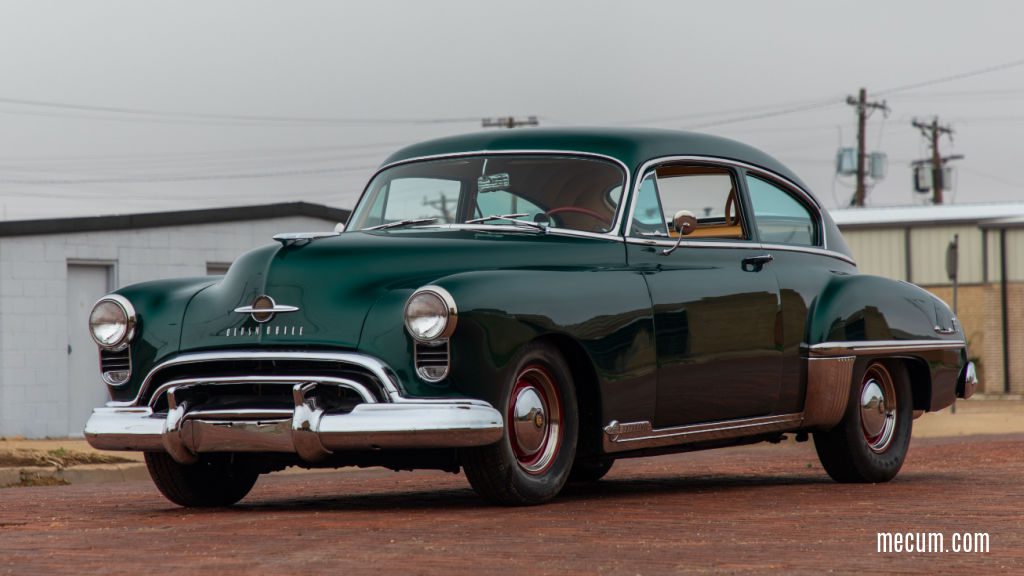
First, the 1949 Oldsmobile Rocket 88, often considered the first muscle car, was a game-changer with its high-compression overhead valve V8 in a lightweight body.
The Rocket 88, designed by GM’s Charles Kettering, featured an innovative 303 cubic inch V8 engine producing 135 horsepower and 283 lb-ft of torque.
Its overhead valve design increased compression and improved power and efficiency, achieving around 10% better fuel economy than earlier engines.
2. 1955 Chevrolet Bel Air
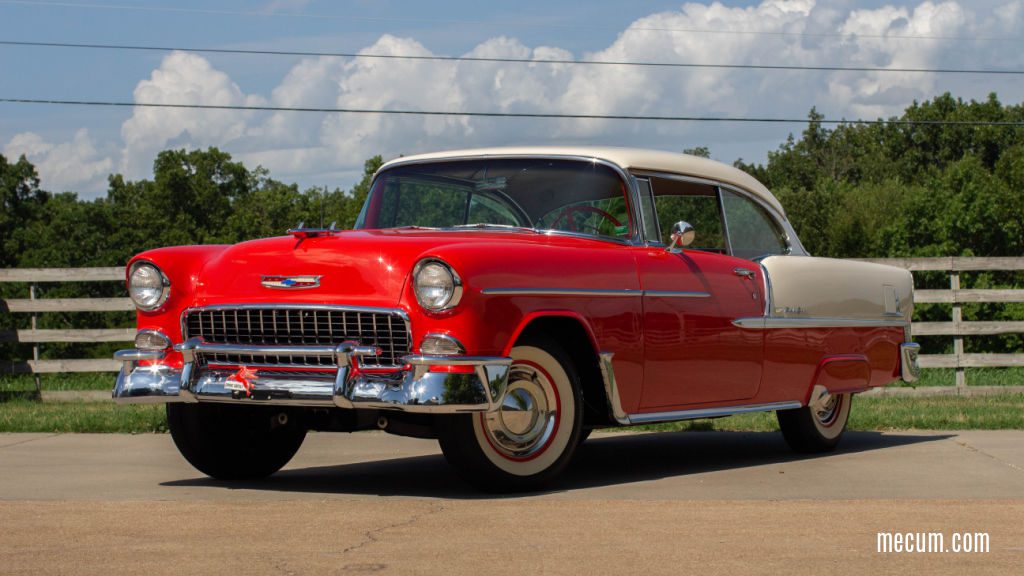
The 1955 Chevrolet Bel Air is a timeless icon that emerged in the mid-1950s with its new “motoramic” styling and powerful V8 engine option.
It marked a significant moment for Chevrolet as they provided a strong response to Ford in the performance battle for the first time in 35 years.
The top engine option for the Bel Air was the 265 cubic inch Turbo-Fire V8, which offered 162 horsepower with a two-barrel carburetor or 180 horsepower with the optional Plus-Power Package featuring a four-barrel carburetor and dual exhaust.
The V8 engine was complemented by a new 12-volt electrical system, enabling various power accessories like windows, door locks, and windshield wipers.
The Bel Air featured an improved suspension system, distinctive exterior elements such as the Ferrari-inspired egg crate grille, and a luxurious and stylish interior.
3. 1955 Chrysler C-300
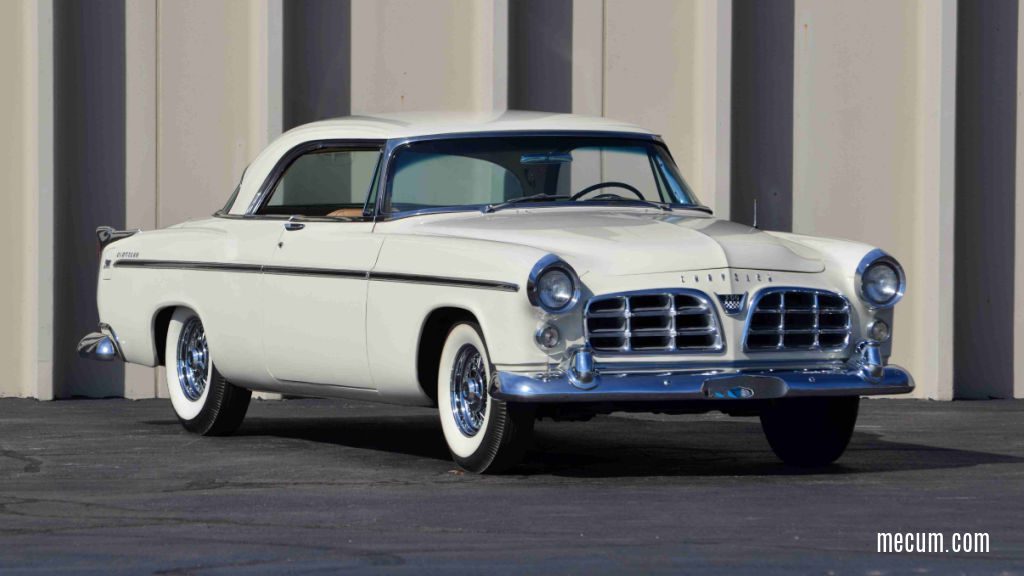
The 1955 Chrysler C-300 was a groundbreaking car that also help set the stage for the muscle car era.
Officially offered for sale on February 10, 1955, it was known for its athletic appearance and impressive performance.
With a top engine option, it boasted 300 gross horsepower, making it one of the quickest cars of its time. It could accelerate from 0 to 60 mph in just 9.8 seconds and reach a top speed of 130 mph.
The C-300 had a distinctive styling by Virgil Exner and featured a powerful FirePower 331 cubic inch Hemi engine with two four-barrel carburetors.
It also had a heavy-duty suspension that contributed to its excellent handling. The car’s racing heritage dominated the stock car circuit, earning its first year’s NASCAR and AAA championships.
With only 1,725 units sold during its short model year, the 1955 Chrysler C-300 is a rare and highly sought-after classic car today.
4. 1957 AMC Rambler Rebel
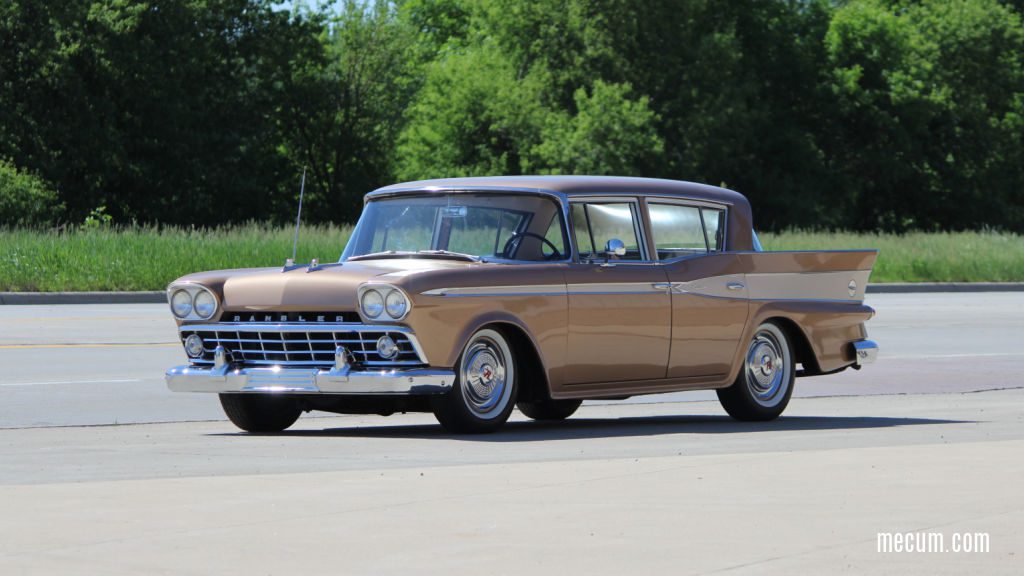
The Rambler Rebel, manufactured by American Motors Corporation (AMC) in Kenosha, Wisconsin, was produced from 1957 to 1960 and then had a subsequent production run in 1966 and 1967.
The 1957 Rambler Rebel was a unique and highly unusual car that stood out for its outstanding performance. Despite being mostly ignored by vintage car and muscle car enthusiasts, it is America’s fastest 4-door sedan for that year.
The Rebel was born from low product development budgets as American Motors faced financial difficulties. AMC created a special version of the Rambler Custom four-door hardtop powered by the Ambassador/Hornet V8 engine to offer a performance car without high development costs.
The Rebel featured a new 327 V8 engine with 255 horsepower and 345 lb-ft of torque, making it a powerful and fast sedan. With a 0-60 mph time of 7.5 seconds, it outperformed many legendary muscle cars of the era.
Although the fuel-injected version was never released to the public, it was rumored to have even greater acceleration capabilities.
5. 1958 Packard Hawk
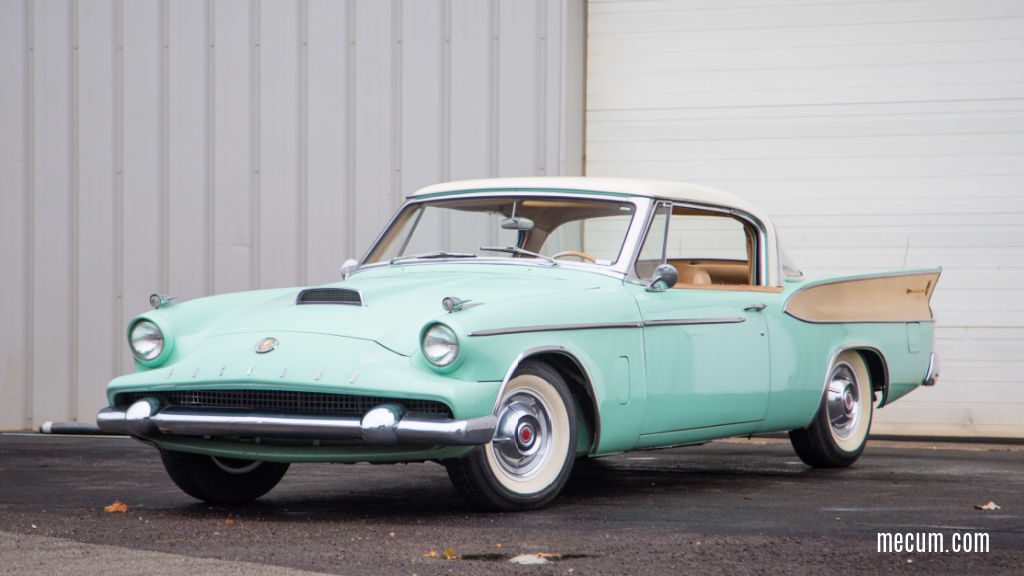
The 1958 Packard Hawk is a uniquely styled car that was produced amidst challenging circumstances for Studebaker-Packard.
It features a distinctive design created by designer Duncan McRae, inspired by European models and modified a 1957 Studebaker Golden Hawk 400.
The Packard Hawk stands out with its fiberglass front end, low and wide air intake, vinyl-covered armrests outside the windows, and other unique features.
Under the hood, it has a “Jet Stream Supercharged” 289 V8 engine with a McCulloch supercharger and a Stromberg two-barrel carburetor.
The Packard Hawk offers a luxurious interior with tan leather upholstery, a stylish instrument panel with Stewart Warner gauges, and a spacious and comfortable driving experience.
It is a rare and collectible car, with only 588 units produced.
Muscle Cars in the 1960s
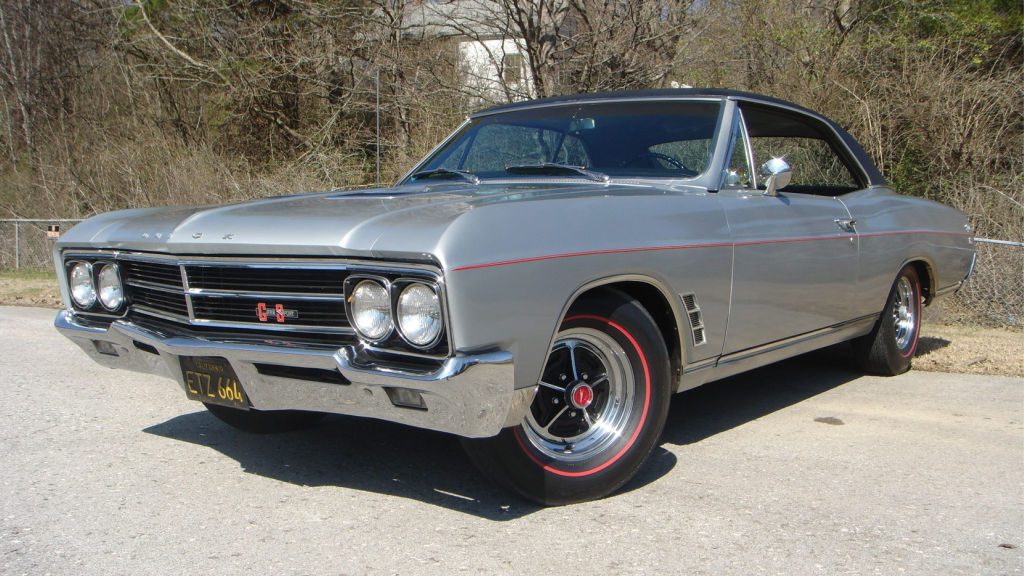
The 1960s were a golden era for muscle cars, with the introduction of several iconic models that would forever leave their mark on the automotive industry.
This decade was characterized by a high demand for performance vehicles, driven by technological advancements and the growing popularity of NHRA drag racing, NASCAR, and Trans Am style racing.
Muscle cars quickly became a symbol of American power and freedom, capturing the spirit of a generation that craved speed, power, and rebellion.
Their popularity soared and became deeply ingrained in American culture, influencing music and movies.
With their unique features and specifications, these vehicles contributed significantly to the legacy of muscle cars.
They embodied the spirit of the 1960s—a rebellious time of innovation, power, and a desire to push the boundaries of what was possible.
| Attribute | 1960s Muscle Cars |
|---|---|
| Performance | High-compression V8 engines |
| Horsepower | High horsepower output—up to 450-hp |
| Speed | Impressive quarter-mile times ranging from 13 to 14 seconds |
| Design | Boxy and aggressive styling |
| Size | Compact or mid-size bodies |
| Weight | Relatively lighter weight |
| Transmission | Manual and automatic transmissions |
| Suspension | Firm and sport-tuned suspension |
| Braking | Front disc brakes become more common |
| Technology | Limited technological features |
| Racing Heritage | Dominance in drag racing and NASCAR |
| Popular Models | Plymouth Road Runner, Chevrolet Chevelle SS, Pontiac GTO |
| Iconic Engines | Ford 428 Cobra Jet, Chevrolet 396, Chrysler 426 HEMI |
Here are five prime specimens of muscle cars from the 1960s, including the Pontiac GTO, Dodge Charger R/T, Ford Torino, Chevy Chevelle SS, and Plymouth Road Runner.
1. Pontiac GTO
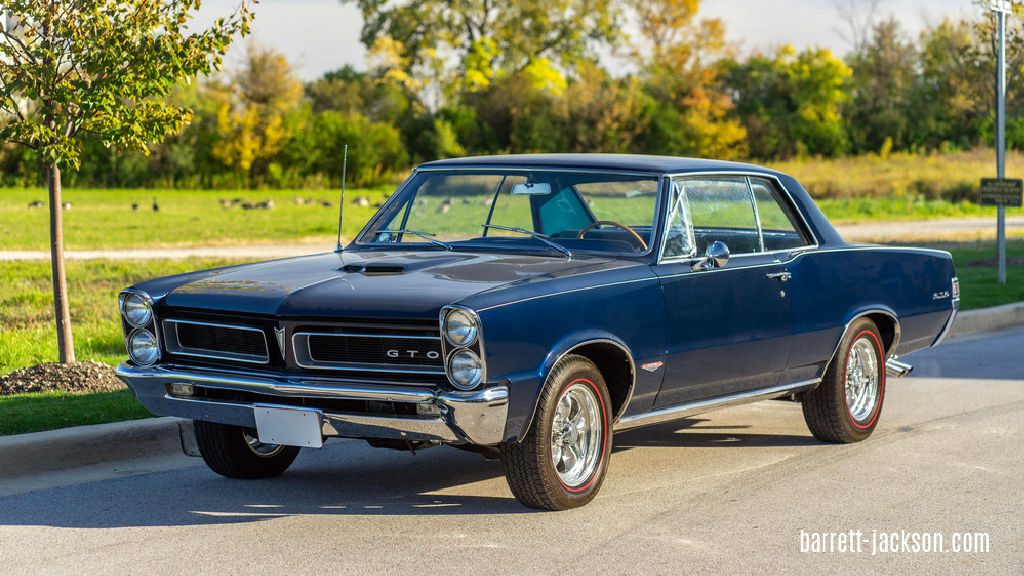
Born from General Motors’ Pontiac division, the Pontiac GTO reigned across four generations from 1964 to 1974.
Often credited as the spark that ignited the muscle car era in the 1960s, its impact was undoubtedly significant.
Originally, the GTO wasn’t a standalone model. For the 1964 and 1965 model years, it emerged as an optional package for the mid-sized Pontiac Lemans.
However, from 1966 to 1971, the GTO asserted its independence, stepping into its own spotlight.
The GTO’s first generation boasted sporty performance, built around a beefy 389 cubic inch Pontiac V8 engine that didn’t just purr—it roared.
Its credentials were recognized in 1968 when it clinched the Motor Trend Car of the Year, a prestigious honor in the automotive world.
In a defiant move, the GTO bypassed GM’s policy, which had imposed a ceiling on the A-body intermediate line, limiting engine displacement to a maximum of 330 cubic inches.
With this bold step, the GTO further cemented its high-performance reputation.
2. Dodge Charger R/T
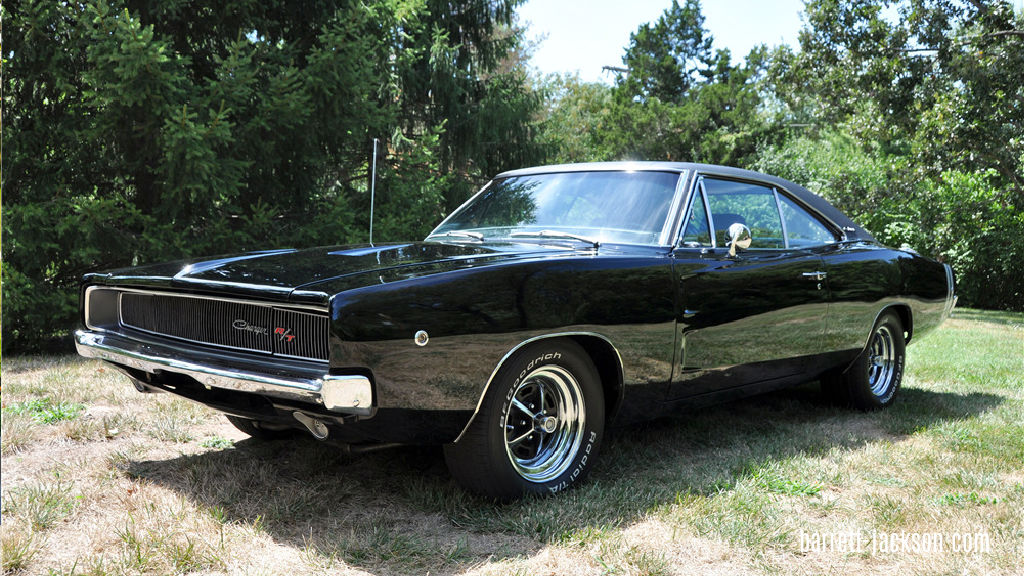
A defining icon of the muscle car era, the Dodge Charger R/T roared to life from 1966 to 1978.
This powerhouse offered a suite of robust V8 engines, including the 383, 426 Hemi, and the formidable 440. With horsepower flexing between 335 to 425 and torque flexing its muscles from 425 to 490 lb-ft, the Charger didn’t just drive—it dominated.
Renowned for its impressive quarter-mile time of roughly 13.5 seconds and a top speed that breezed past 130 mph, the Charger R/T became a beacon of American power and performance. Its powerful engine and distinctive design made it not just a car but a symbol.
Breaking new ground, the Charger was the first U.S. production vehicle to flaunt a spoiler. It wasn’t just for show, either—the Charger was a champion on the track.
The 1969 Dodge Charger Daytona, in particular, outshone the competition, winning more races than any other car in the 1970 NASCAR season.
This winning streak further cemented the Charger’s formidable legacy in American automotive history.
3. Ford Torino
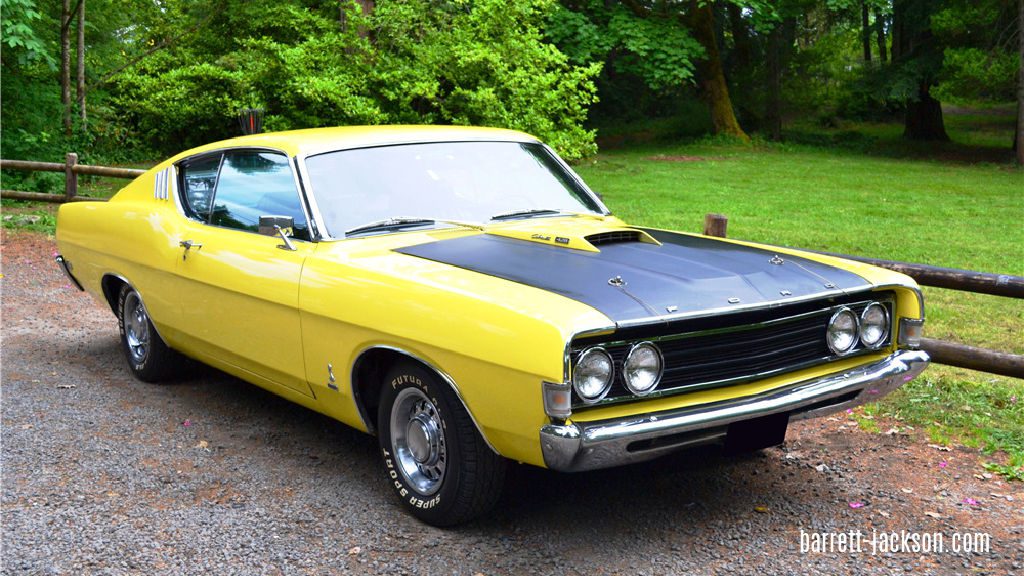
From 1968 to 1976, the Ford Torino GT and Cobra models carved out a niche in the muscle car era.
The 1970 Torino Cobra, armed with the formidable 429 Super Cobra Jet engine, was at the heart of the transformation.
This wasn’t just a car—it was a muscle machine. With a thunderous 375 horsepower and 450 lb-ft of torque, it blazed through quarter-mile tests in about 13.99 seconds, hitting a top speed of 101 mph.
The Torino GT and Cobra models earned their stripes through sheer performance and power. The Torino Cobra, especially, rose from the underdog position to become a champion in the realm of factory supercars.
It was the 429 Super Cobra Jet engine and the Drag Pack option that put it on par with the big guns of the 1970 muscle car era, including the 440 Six Pack Dodge Challenger, the Ram Air IV Pontiac GTO, and the Stage 1 Buick GS.
In an era dominated by giants, the Torino Cobra held its own, screeching loud and clear in the muscle car landscape.
4. Chevy Chevelle SS
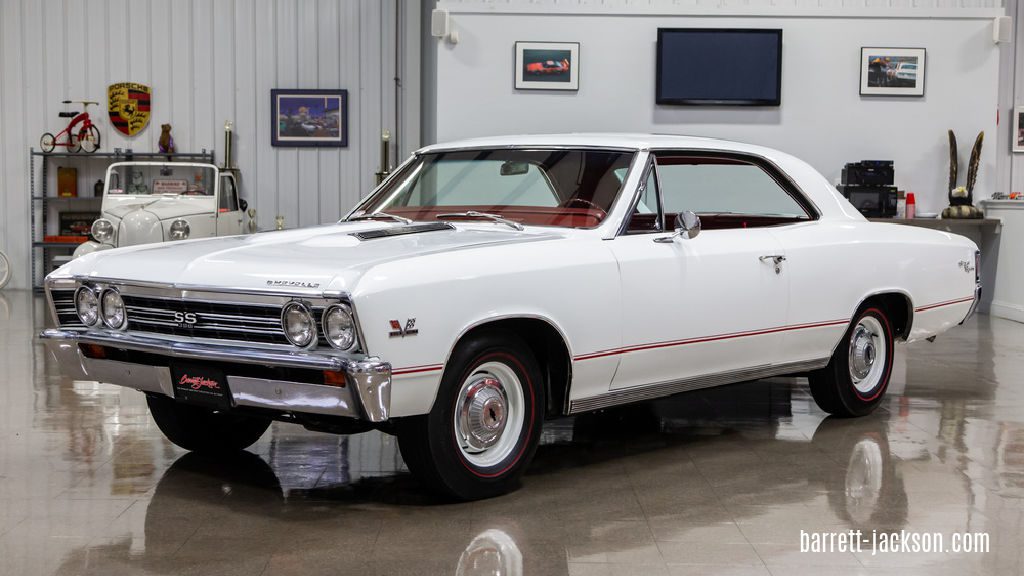
From 1964 to 1977, the Chevy Chevelle SS reigned as a definitive emblem of the muscle car era, with its “Super Sport” variants thundering down the roads until 1973.
Initially, the Chevelle SS flexed its muscles with a range of V8 engines, starting with a robust 283 cubic inch engine churning out 220 horsepower in 1964.
Come 1966, the Chevelle SS 396 emerged as its own beast, parading three variants of the 396 cubic inch V8s, boasting horsepower ratings from a hefty 325 to a staggering 375.
Performance-wise, the Chevelle SS was nothing short of extraordinary, celebrated for its blistering quarter-mile times and formidable speeds.
The 1965 Z-16 option, armed with a 396 cubic inch V8 engine, could blitz the quarter-mile in about 14.5 seconds, hitting speeds of up to 100 mph.
But the true pinnacle of its legacy was the 1970 Chevelle SS 454 LS6.
With a jaw-dropping 450 horsepower and a mammoth 500 lb-ft of torque, this powerhouse raced down the quarter-mile stretch in a swift 13.6 seconds, outpacing its rivals easily.
This achievement forever etched the Chevelle SS 454 LS6’s name in the annals of muscle car lore.
5. Plymouth Road Runner
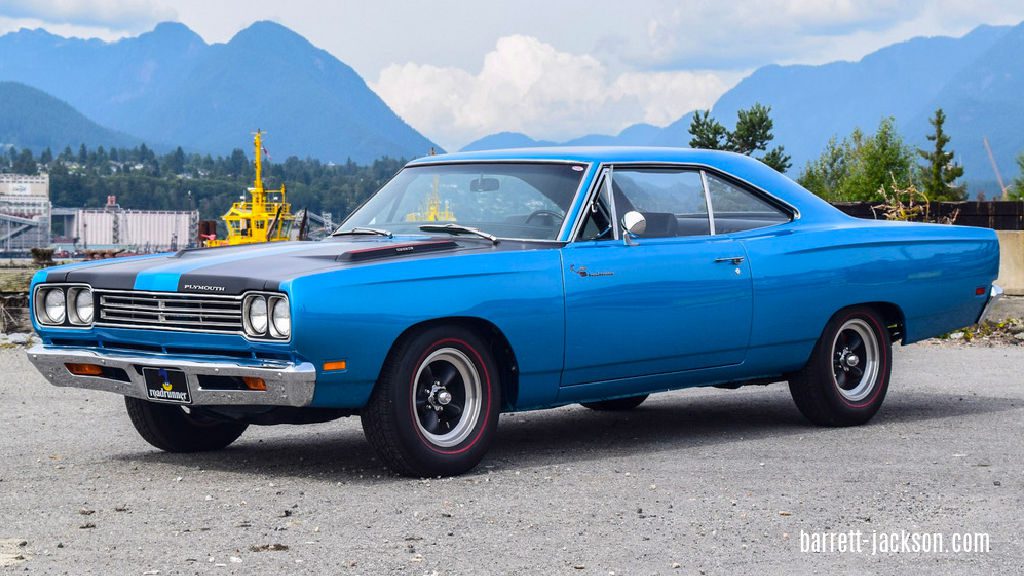
From 1968 to 1980, the Plymouth Road Runner, an unpretentious mid-size car emphasizing affordable performance, made its mark in the United States. It was a serious contender in the muscle car golden era of the 1960s and 70s.
The first generation Road Runner (1968-1970) came with an impressive lineup of V8 engines. This range included a 383 that cranked out 335 hp and 425 lb-ft of torque, a 426 Hemi, and a 440.
The 426 Hemi, an additional $714 option, boasted a robust 425 hp and 490 lb-ft of torque.
Not to be underestimated, the Road Runner posted noteworthy quarter-mile times. Its Superbird variant, for instance, could clock in at 14.3 seconds while hitting speeds of 104 mph.
The car’s performance didn’t go unnoticed—it was crowned Motor Trend Car of the Year in 1969. This recognition and strong sales played a substantial role in propelling the popularity of muscle cars during this era.
The 1970 Road Runner brought fresh looks to its front and rear ends, marking the last year of the Road Runner convertible.
Yet, despite shifting market trends and stricter emission regulations, the Road Runner remained on the production line well into the 1980s, proving its resilience in an ever-changing automotive landscape.
Muscle Cars in the 1970s
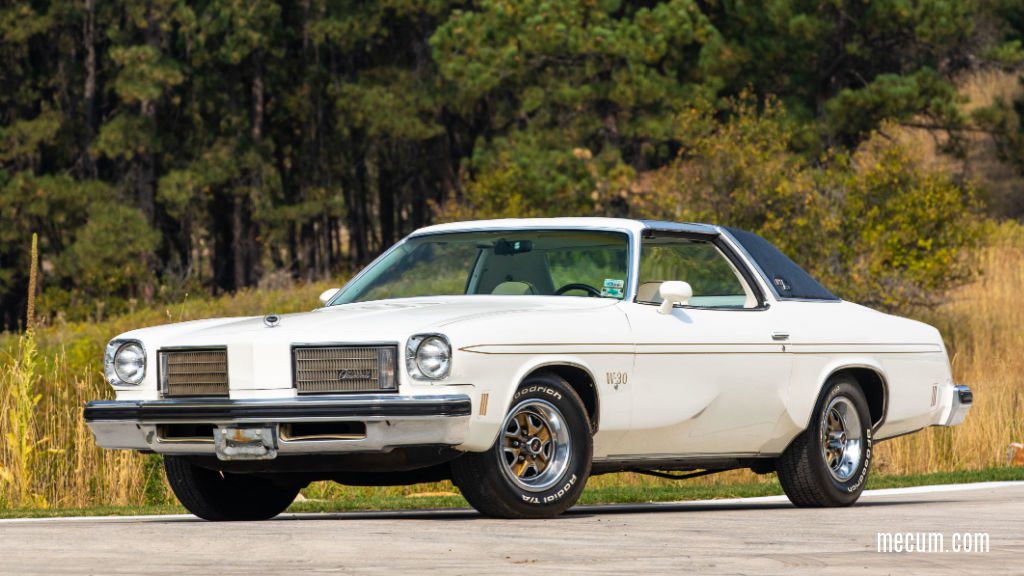
The 1970s witnessed a notable shift and obstacles for muscle cars, particularly in the mid to late 1970s, commonly known as the “Malaise Era” in the automotive industry.
During this time, various factors contributed to a decline in the performance and popularity of these potent vehicles. They became bigger, heavier, and focused more on creature comforts.
1970 was a pinnacle for muscle cars, showcasing the highest levels of compression, horsepower, and torque ever seen in these vehicles.
Iconic models, including the Chevrolet Chevelle SS, Dodge Charger R/T, and Buick GSX, were updated, boasting unprecedented power and performance.
However, this peak was short-lived.
As the decade progressed, the performance of muscle cars began to wane year by year, with horsepower figures dropping by half by 1975.
This decline was primarily due to increasing insurance costs, stricter emission regulations, and the 1973 oil crisis, which shifted consumer preferences towards more fuel-efficient vehicles.
By 1975, as it was known in its glory days, the muscle car had all but disappeared from the market. Pony cars like the Ford Mustang, Chevrolet Camaro, and Pontiac Trans Am carried the torch for performance.
Despite these challenges, the early to mid-1970s still saw the release of some notable muscle cars.
The 1970 Buick GSX, with its high-performance 455 cubic inch V8 engine, and the 1971 Plymouth Hemi Cuda, one of the last true muscle cars of the era, are prime specimens of the enduring spirit of the muscle car during this tumultuous period.
| Attribute | 1970s Muscle Cars |
|---|---|
| Performance | Powerful V8 engines |
| Horsepower | Slightly lower horsepower due to emissions |
| Speed | Still impressive acceleration and top speed |
| Design | Bigger, bulkier bodies with bolder styling |
| Size | Larger and heavier bodies |
| Weight | Increased weight due to safety regulations |
| Transmission | Automatic transmissions became the norm |
| Suspension | Softer suspension for improved ride comfort |
| Braking | Disc brakes becoming standard on most models |
| Technology | Introduction of basic electronic features |
| Racing Heritage | Continued participation in motorsports |
| Popular Models | Oldsmobile 442, Chevrolet Chevelle, Ford Torino |
| Iconic Engines | Dodge 440 Six Pack, Chevrolet 454 LS6, Buick 455 Stage 1 |
Next, let’s look at 1970s muscle cars, including the Buick GSX, Oldsmobile 442 W30, AMC Rebel Machine, Mercury Cyclone Spoiler, and Dodge Super Bee.
1. Buick GSX
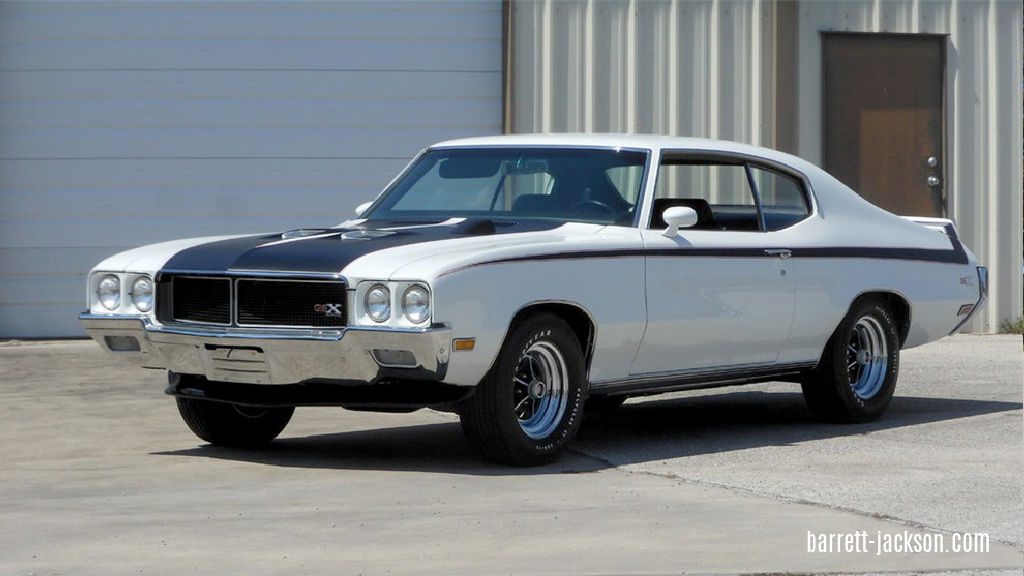
Launched in 1970 as Buick’s response to rivals like the Pontiac GTO Judge, Oldsmobile 442 W30, and Chevy Chevelle SS, the Buick GSX quickly became a standout in the muscle car crowd.
This high-performance variant of the Buick GS was a rare breed, with only 846 units rolling off the production line from 1970 to 1972.
Under the hood, the GSX packed a monstrous 455 cubic inch V8 engine, available in a standard configuration and a souped-up Stage 1 performance option.
This powerhouse churned out a jaw-dropping 360 horsepower and 510 lb-ft of torque, placing it firmly amongst the heavyweights of the era.
The GSX earned its stripes on the quarter-mile track, dashing through in just 13.38 seconds at a speed of 105.5 mph.
In 1970, the GSX dressed to impress in only two colors: Saturn Yellow and Apollo White. It came loaded with noteworthy standard features such as a hood-mounted tachometer, quick ratio steering, and anti-sway bars.
With its compelling combination of breathtaking performance, muscular aesthetics, and limited production numbers, the GSX played a pivotal role in defining the muscle car era.
2. Oldsmobile 442
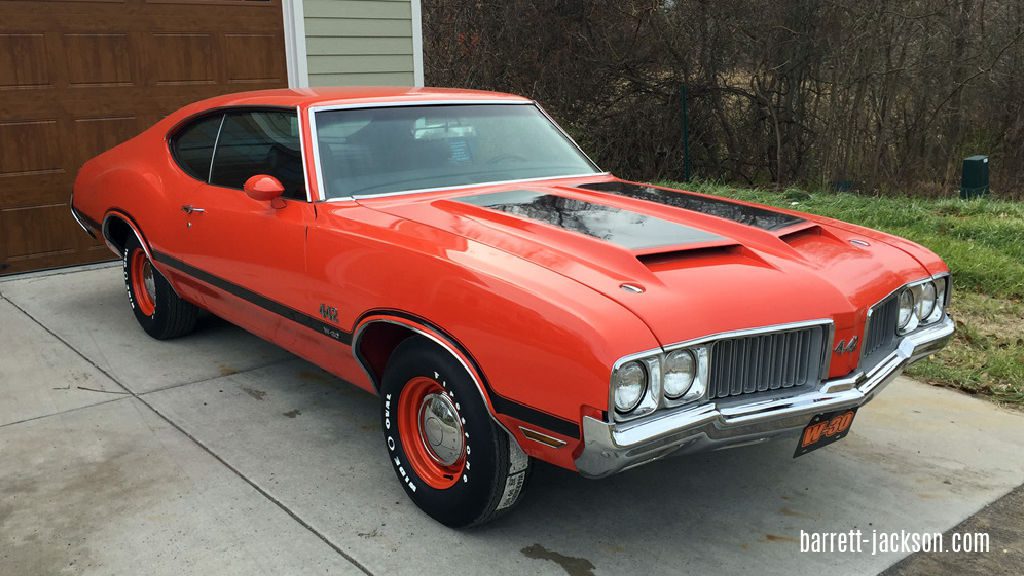
The Oldsmobile 442 W-30, a shining star in the muscle car firmament of the 1970s, emerged from the stables of General Motors’ Oldsmobile division.
Over a production run spanning 1964 to 1980, the 442 model welcomed the W-30 performance package into its family in the late 60s.
Its name was a nod to its original configuration: a four-barrel carburetor, four-speed manual transmission, and dual exhaust.
During the 1970s, the 442 W-30 flexed its muscles with a 455 cubic inch V8 engine under the hood, sprinting through the quarter-mile in about 13 seconds.
Running wheel to wheel with other high-performance cars of its era, the 4-4-2 W-30 was a standout. Its formidable speed, impressive capabilities, and distinctive design elements helped it make its mark.
Adding to its credentials, the 4-4-2 W-30 served as the pace car for the esteemed Indianapolis 500 race in 1970, an honor that further bolstered its reputation as an extraordinary high-performance vehicle.
3. AMC Rebel Machine
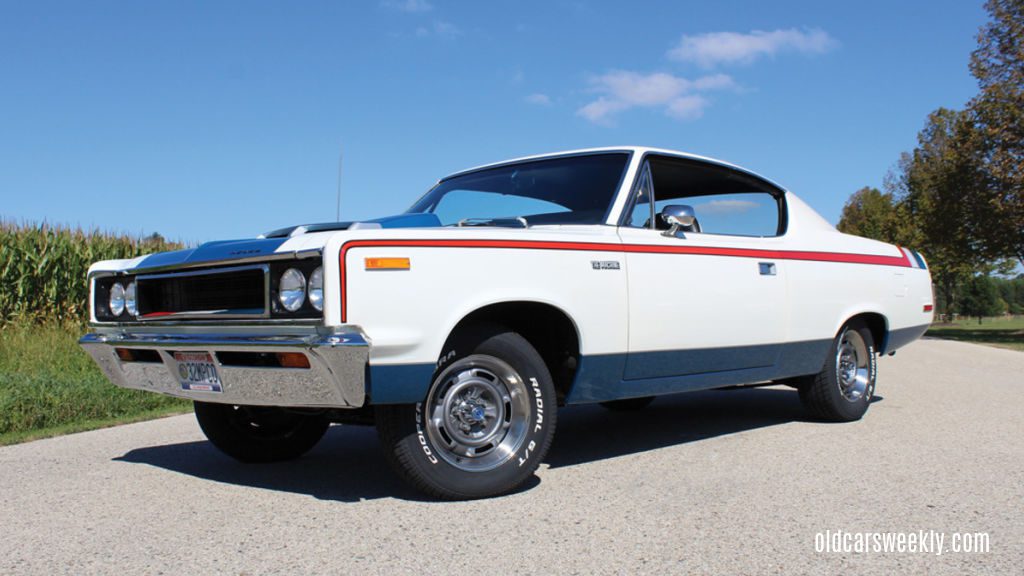
The 1970 AMC Rebel Machine is an underrated and underappreciated muscle car worthy of recognition when discussing the history of muscle cars.
The 1970 AMC Rebel Machine, a bold and audacious muscle car, was produced only in 1970.
Under the hood, the Rebel Machine was powered by a 390 cubic inch V8 engine, producing an impressive 340 horsepower and 430 lb-ft of torque.
This high-performance Rebel could run a quarter-mile in 14.40 seconds at 100.6 miles per hour, putting it on pace with competitors like the Plymouth AAR Cuda and Mercury Cougar Eliminator. It didn’t take much to get this vehicle into the 13s.
The Rebel Machine significantly impacted the muscle car era, showcasing AMC’s commitment to performance and willingness to take risks. It debuted at the NHRA World Championship Drag Race Finals in Dallas, Texas, in 1969, generating excitement among potential buyers and capturing the attention of the automotive press.
Despite stiff competition from well-established rivals in the muscle car market, the Rebel Machine was marketed as “the car you always wanted.” Its optional unique red, white, and blue paint scheme, 15″ Kelsey-Hayes wheels, and bold “Machine” decals made it a standout in the list of muscle cars.
4. Mercury Cyclone Spoiler
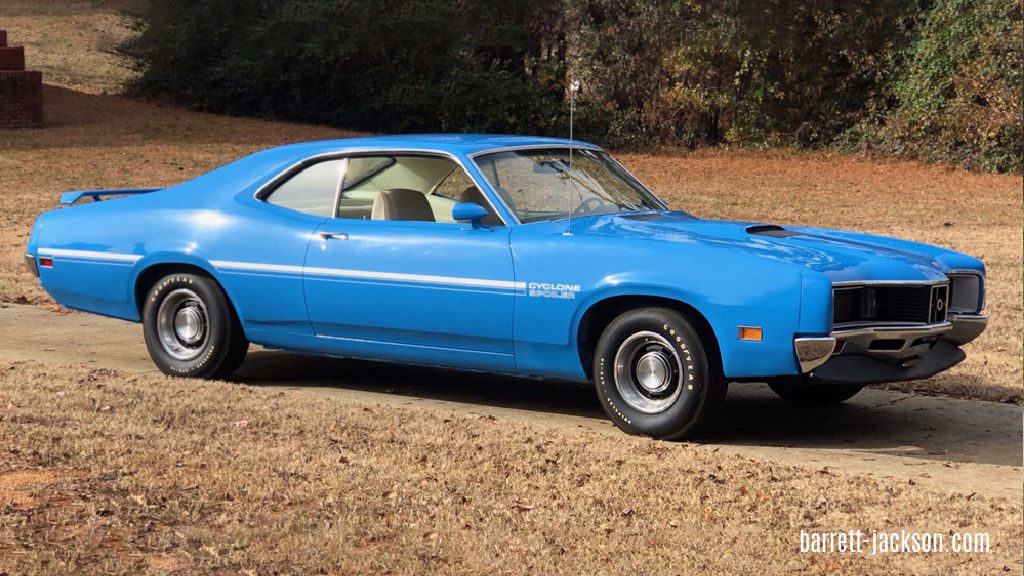
Here’s another underrated muscle car that needs to be highlighted more.
The Mercury Cyclone was a standout model in the early 1960s, born from the Comet and transformed into a circuit racer with the addition of Ford’s big block V8 engine.
In 1970, Ford experimented with new aerodynamic bodies for the Cyclone, inspired by designs used on their King Cobra prototype intended for NASCAR domination.
The Cyclone Spoiler II was set to be released in 1970 with an extended nose, and it was planned to be built in 519 road-going units to comply with NASCAR certification. However, the program was canceled.
The few cars that made it into public hands featured engines ranging from the 290hp 351 Windsor engine to the potent 429 Super Cobra Jet.
The 1970 Cyclone Spoiler, featuring a 429 engine, is considered one of the most powerful and exciting Mercurys ever made.
5. Dodge Super Bee
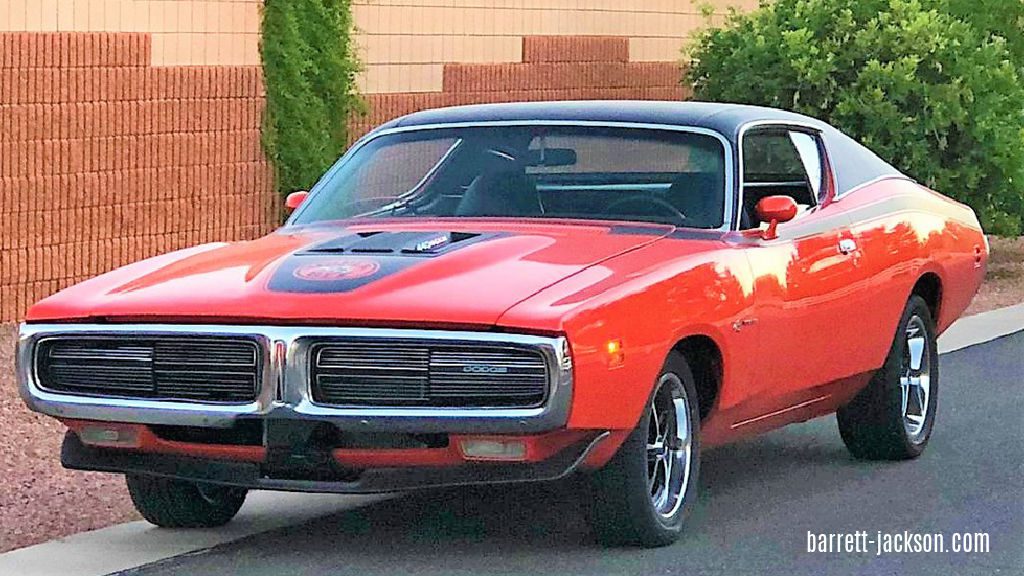
The Dodge Super Bee, produced from 1968 to 1971, was Dodge’s response to the demand for affordable yet powerful muscle cars. It offered a captivating fusion of power and affordability.
Various V8 engine options were available for the Super Bee. The base model featured a 383 cubic inch Magnum engine, delivering 335 horsepower. For those seeking even greater power, the 426 cubic inch Hemi engine was an option, boasting an impressive 425 horsepower.
In 1969, a “six-pack” version of Dodge’s 440 cubic inch engine joined the lineup, generating 390 horsepower and 490 lb-ft of torque.
The Super Bee earned recognition for its quarter-mile performance, with mid to high 13-second passes.
Its significance during the muscle car era was highlighted by its unique styling, including a bumblebee tail stripe and a distinct “bumble bee wing” grille in 1970.
Competing against rivals like the Plymouth Road Runner and Chevy Chevelle SS, the Super Bee carved its niche with its compelling trio of brutal power, sparse amenities, and affordability.
The Fall of Muscle Cars
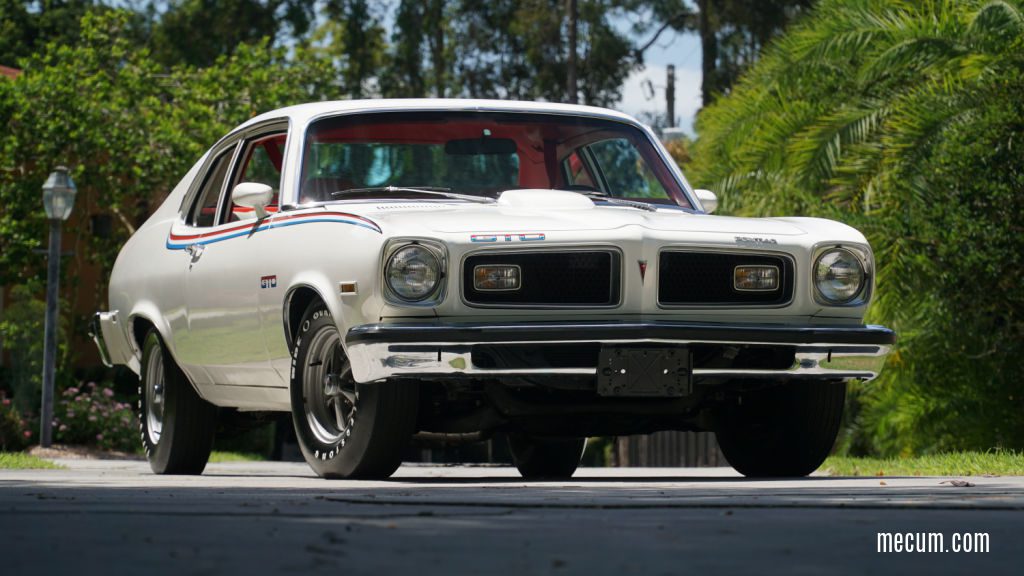
The 1970s marked a period of significant challenges for muscle cars, leading to their eventual decline by the end of 1974. Several factors contributed to this downturn, including federal regulations, rising gas and insurance prices, and changing consumer preferences.
| Factor | Explanation |
|---|---|
| Government Regulations | Government regulations, particularly the Clean Air Act of 1970, imposed stricter emission standards, forcing automakers to modify their engines to reduce pollution. |
| OPEC Oil Crisis | The OPEC oil crisis of 1973 led to fuel shortages and skyrocketing gas prices, making the fuel-hungry muscle cars less appealing. |
| Rising Insurance Rates | Rising insurance rates for high-performance vehicles also deterred potential buyers. |
| Changing Consumer Preferences | A shift in consumer preferences towards smaller, more fuel-efficient cars further impacted the popularity of muscle cars. |
Another significant factor was the rating engine performance switch from gross to net horsepower.
Gross horsepower was measured with the engine running under ideal conditions without accessories, such as the alternator or power steering pump.
On the other hand, net horsepower was measured with all the standard equipment installed, providing a more accurate representation of the power available under normal driving conditions.
This switch led to a perceived decrease in power, as net horsepower ratings were lower than gross horsepower ratings for the same engine.
The introduction of unleaded fuel also had a significant impact on engine performance.
Automakers had to redesign their engines to run on unleaded fuel to comply with new regulations. This involved changes in the cylinder heads and reduced compression ratios, leading to decreased power.
The high-compression engines that had been a hallmark of muscle cars were no longer feasible, further contributing to the decline of muscle cars.
The Cultural Impact of Muscle Cars in America
Muscle cars have profoundly impacted American popular culture, becoming iconic symbols of the country’s automotive culture. They influenced the automotive industry, music, movies, and advertising.
In the world of cinema, muscle cars played starring roles in numerous films during the 1960s and 1970s.
Popular Car Movies
Muscle car movies like “Vanishing Point,” “Gone in 60 Seconds,” “Dirty Mary, Crazy Larry,” and “Two Lane Blacktop” featured these supercars in high-speed chases and races.
| Movie | Year |
|---|---|
| Vanishing Point | 1971 |
| Dirty Mary and Crazy Larry | 1974 |
| Bullitt | 1968 |
| Two-Lane Blacktop | 1971 |
| American Graffiti | 1973 |
| Gone in 60 Seconds | 1974 |
| Mad Max | 1979 |
| Death Race 2000 | 1975 |
| Smokey and the Bandit | 1977 |
| Moonshine Country Express | 1977 |
These memorable appearances helped to popularize muscle cars, making them a staple of American pop culture.
Popular Car Songs
Muscle cars also left their mark on the music industry, with several popular songs of the era paying tribute to these powerful vehicles.
| Song | Artist |
| Little G.T.O. | Ronny & The Daytonas (1964) |
| Little Deuce Coupe | The Beach Boys (1963) |
| 409 | The Beach Boys (1962) |
| Hot Rod Lincoln | Charlie Ryan/Commander Cody and his Lost Planet Airmen (1971) |
| Rocket 88 | Ike Turner/Jackie Brenston (1951) |
| Mustang Sally | Wilson Pickett (1966) |
| East Bound and Down | Jerry Reed (1977) |
During the golden era of muscle cars, the automakers’ prevailing motto was “Win on Sunday, Sell on Monday,” reflecting the direct impact of racing success on sales.
Muscle cars left a significant imprint on the racing scene, featuring prominently in renowned NHRA, SCCA, and NASCAR events.
Their impressive performance on the track captivated audiences and spurred them to purchase these vehicles from dealerships.
Related Questions
The 1949 Oldsmobile Rocket 88 is widely considered the first muscle car in history, featuring a powerful V8 engine in a mid-size body.
The introduction of the 1964 Pontiac GTO is often credited with starting the muscle car era. It combined a high-performance engine with a lightweight body, setting the stage for other manufacturers to follow suit.
The answer varies based on perspective. Pontiac is often regarded as the oldest muscle car brand, with iconic models like the GTO and Firebird. However, the 1949 Oldsmobile Rocket 88 was the first muscle car, though the term “muscle car” emerged in the 1960s.
The combination of increasing emission regulations, rising insurance, changing consumer tastes, and the 1973 oil crisis played a significant role in killing the muscle car era. These factors led to a decline in horsepower and the popularity of muscle cars.
The 1970 Chevrolet Chevelle SS 454 is often considered the king of muscle cars. It boasted a massive 454 cubic inch V8 engine with 450 horsepower—the most of any vehicle during the muscle car era.
Conclusion
The History of muscle cars is a captivating tale of automotive evolution showcasing the original supercars’ birth and rise.
From humble beginnings in the late 1940s to peak popularity in the 1960s and 1970s, muscle cars have continuously pushed the boundaries of power, speed, and design.
They have become synonymous with American automotive culture, representing a unique blend of raw performance and unmistakable style.
As we reflect on the legacy of these iconic machines, it becomes evident that they have left an unforgettable mark on the automotive industry.
Despite evolving trends and changing priorities, muscle cars remain a symbol of freedom, individuality, and the sheer thrill of driving.
As the automotive landscape continues to evolve, the spirit and heritage of muscle cars live on, inspiring future generations to chase the thrill of the open road and appreciate the timeless beauty of these original supercars.

Ryan Wheaton
Ryan has owned muscle cars since 1986 and currently owns a 1972 Dodge Charger Rallye. He combines passion and experience to create engaging content for fellow muscle car enthusiasts. In 2018, he founded Muscle Cars Illustrated, authoring hundreds of articles on tips, history, and trends in the muscle car industry. He attends national car shows, auctions, and museums to stay current with the latest developments in the muscle car industry.
